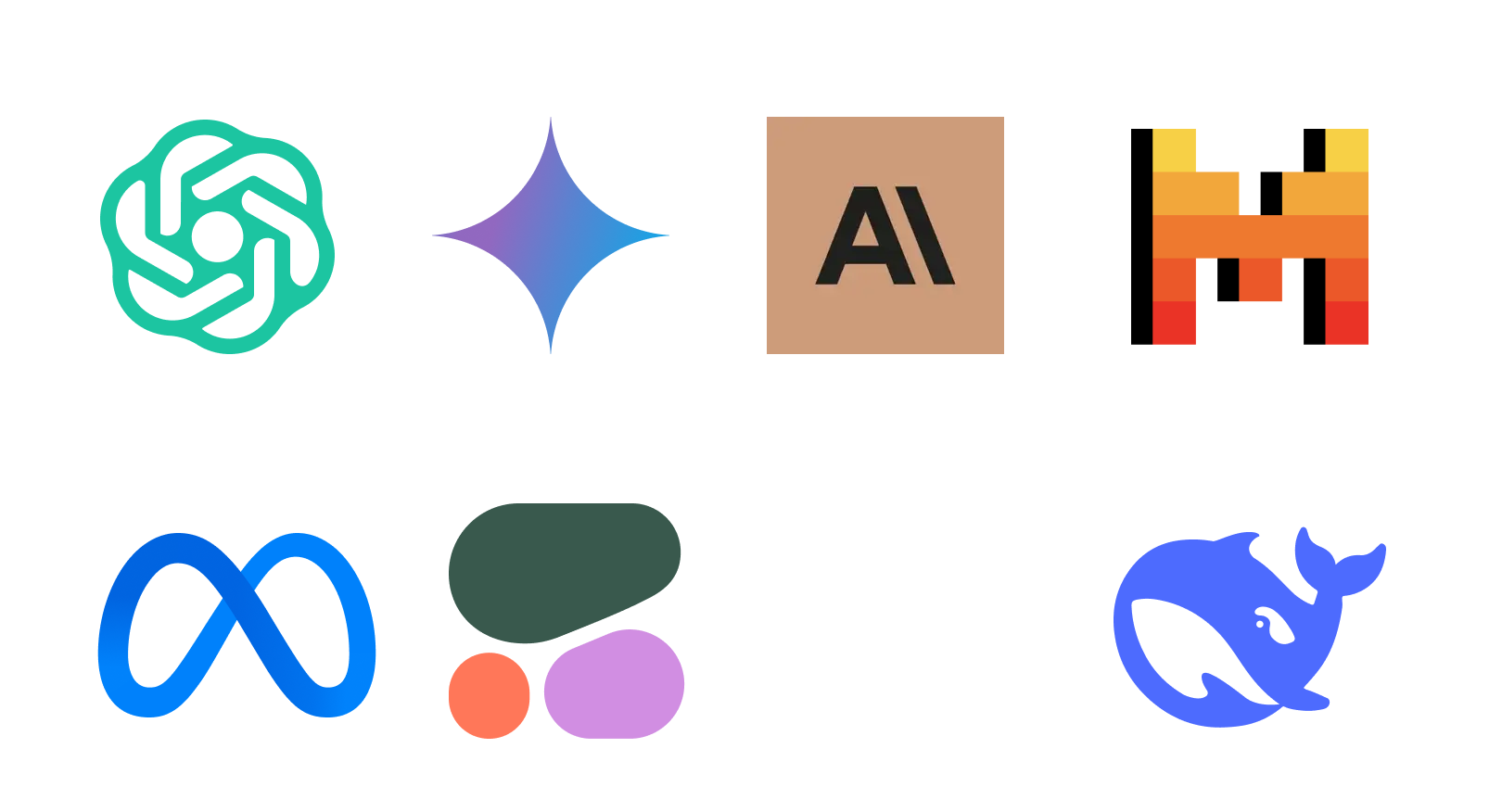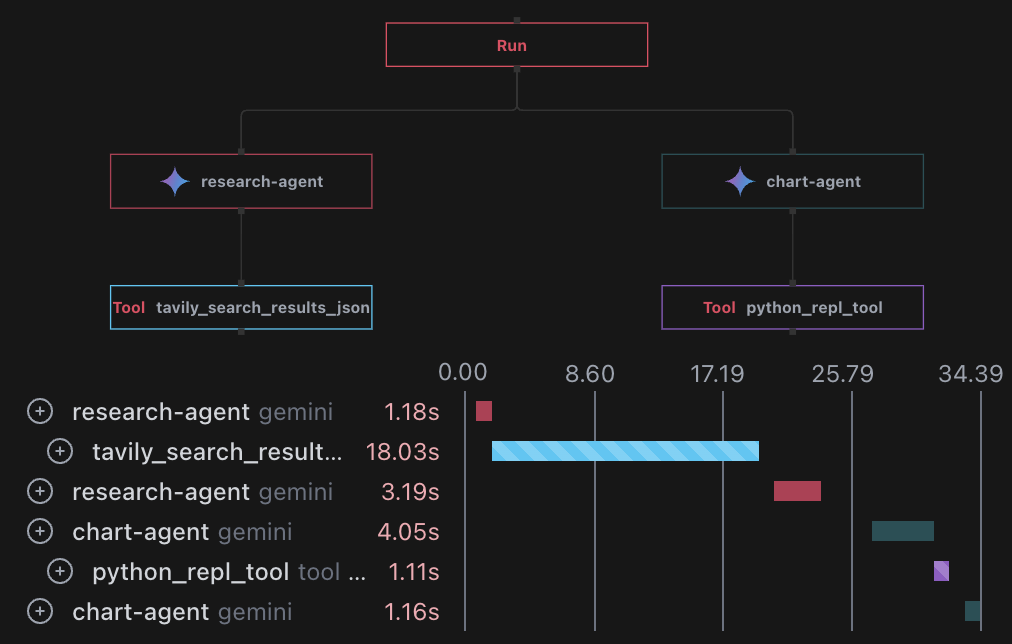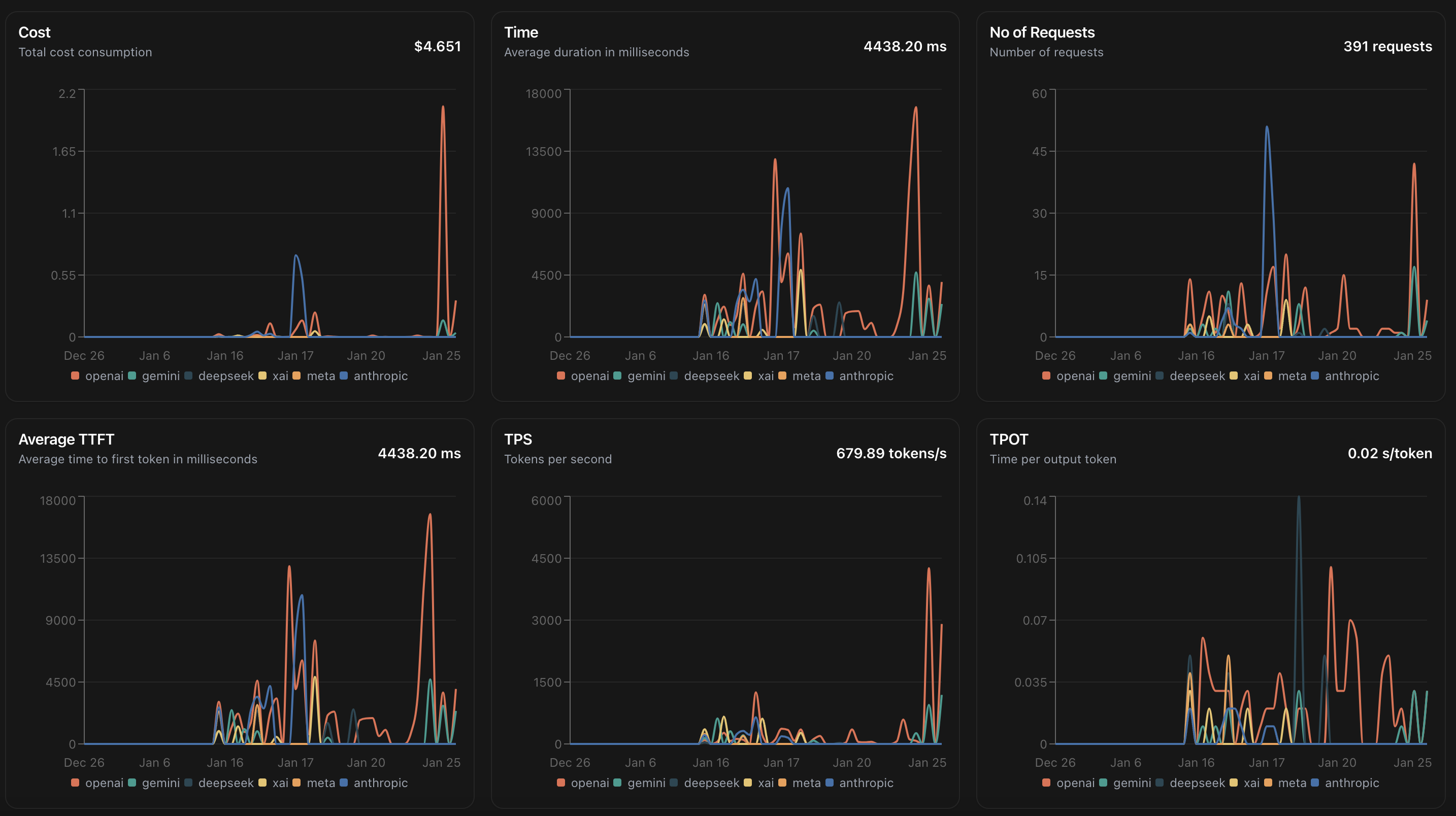The Fastest
Enterprise AI Gateway
Secure, govern, and optimize AI Traffic across 250+ LLMs using OpenAI-Compatible APIs
🎉 Get $10 of free credits on Signup!
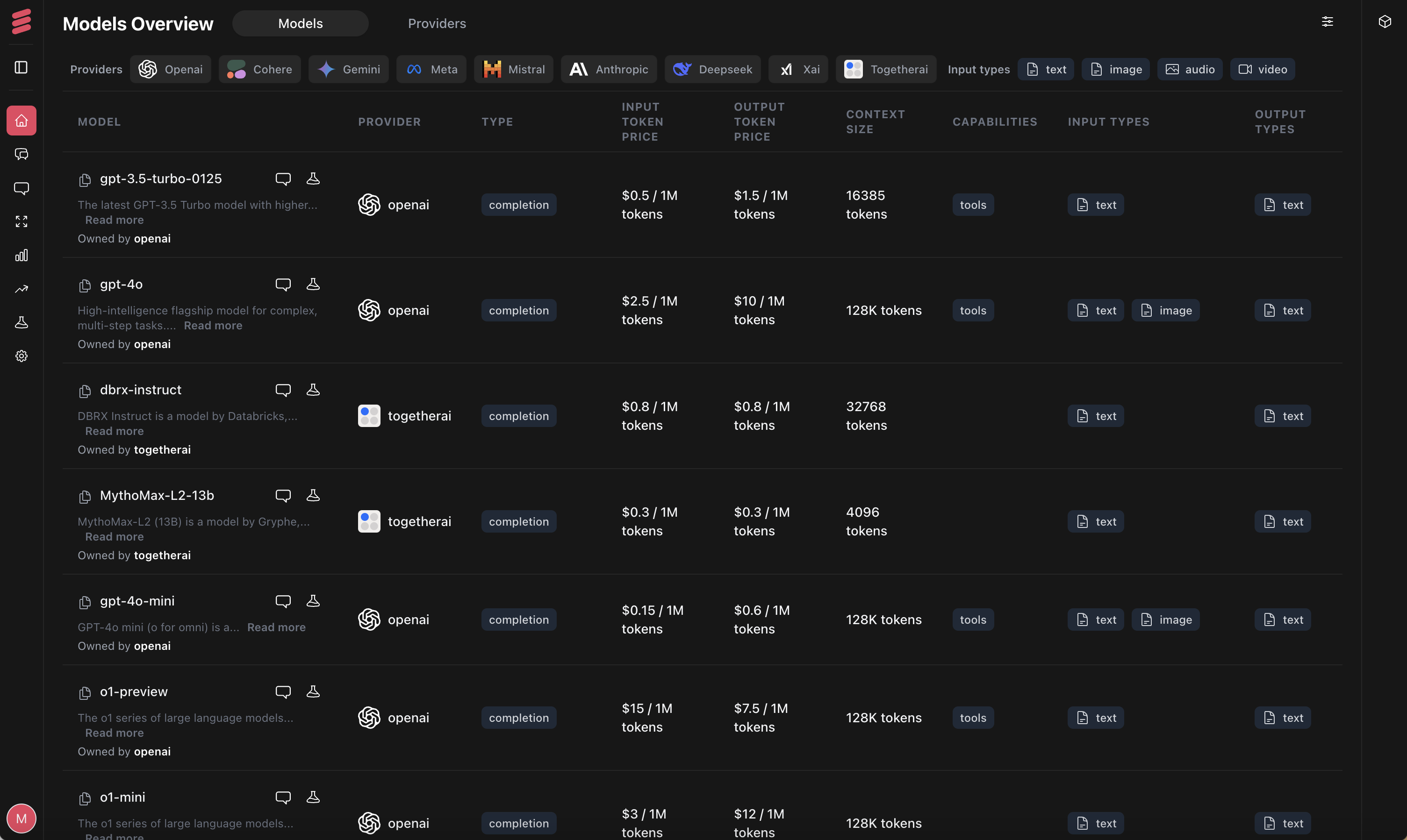
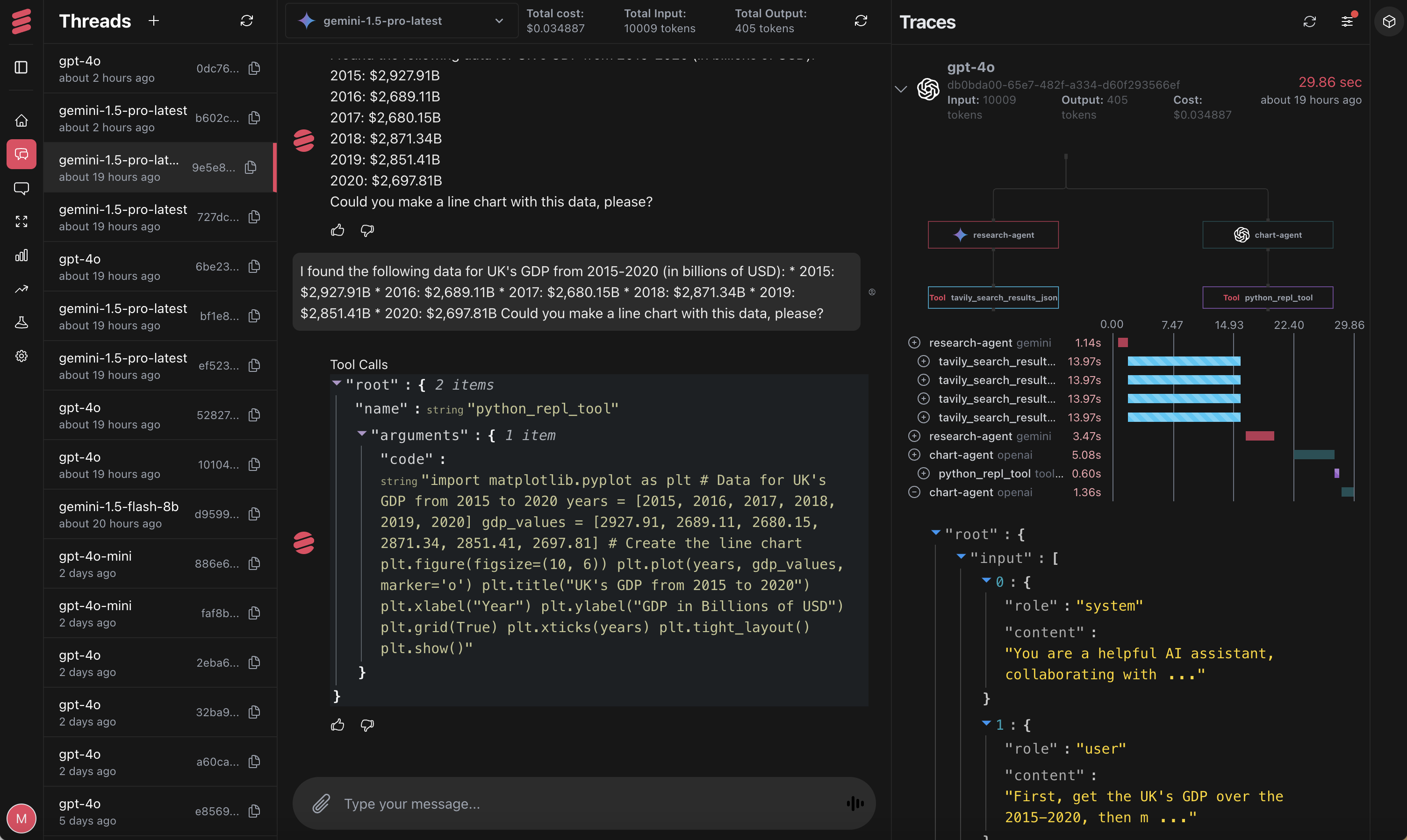
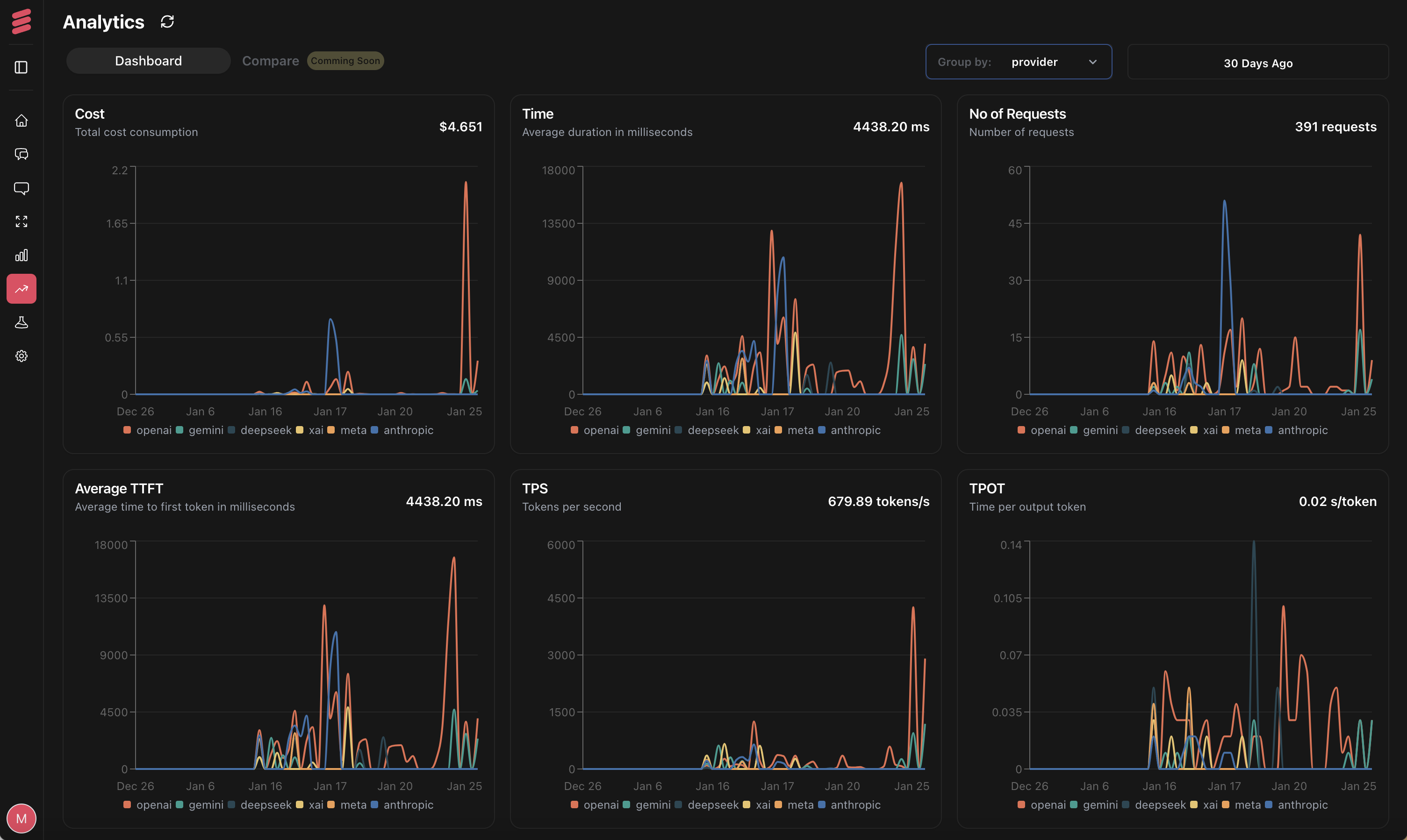
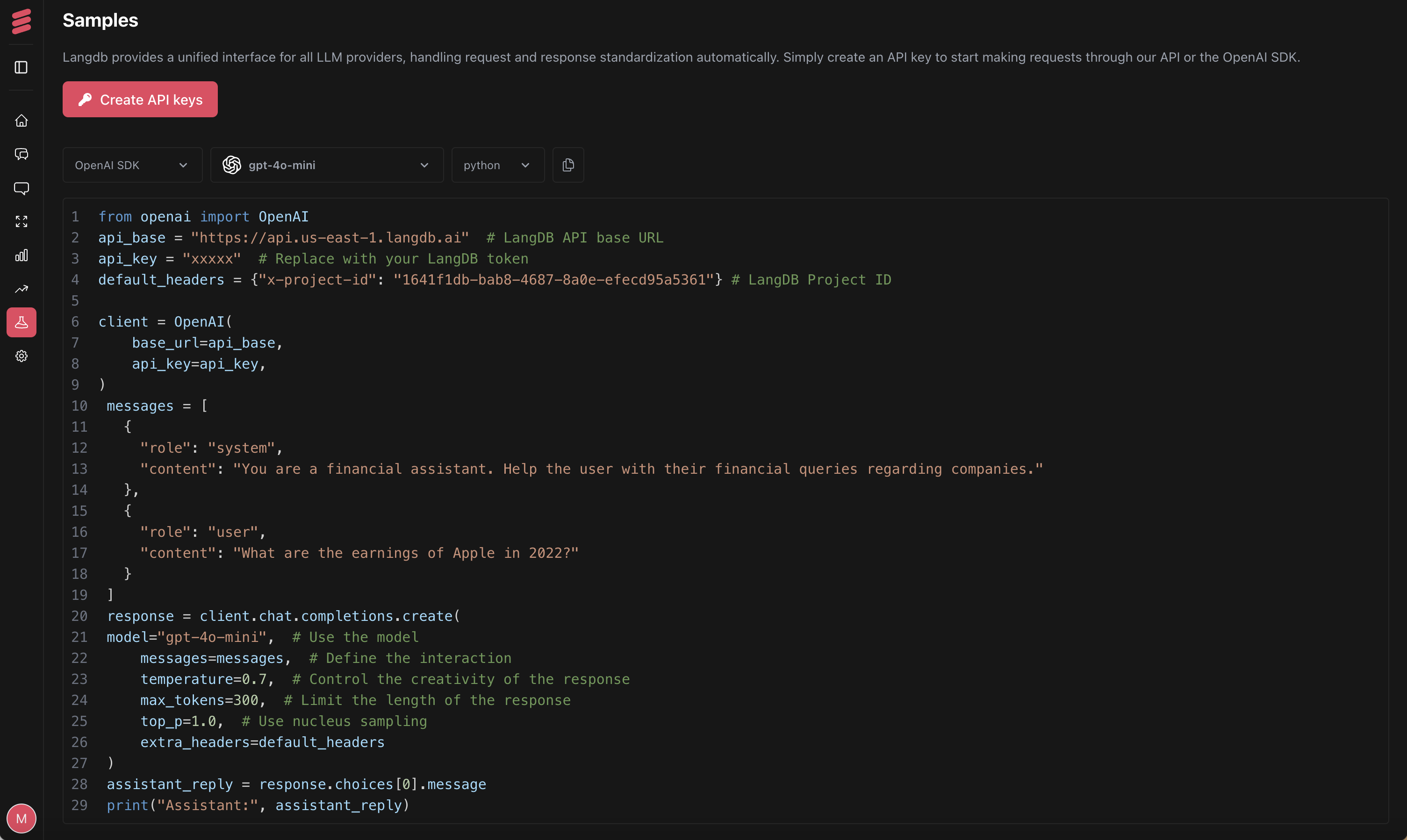
The Command Center
for All AI Workflows
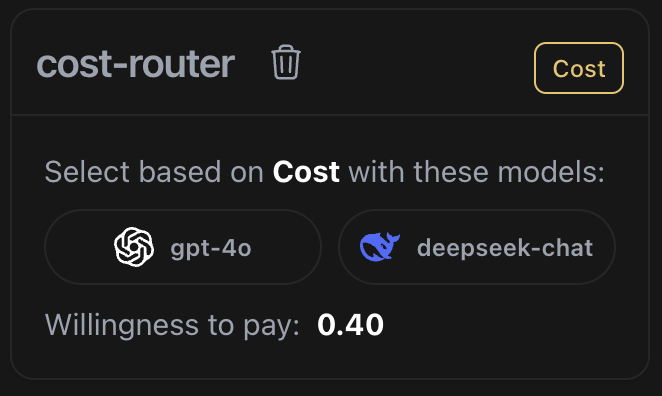
Reduce Costs up to 70% with Smart Routing
With smart routing, every prompt is automatically routed to the best model, enabling savings of up to 70% on your LLM costs while maintaining optimal performance.
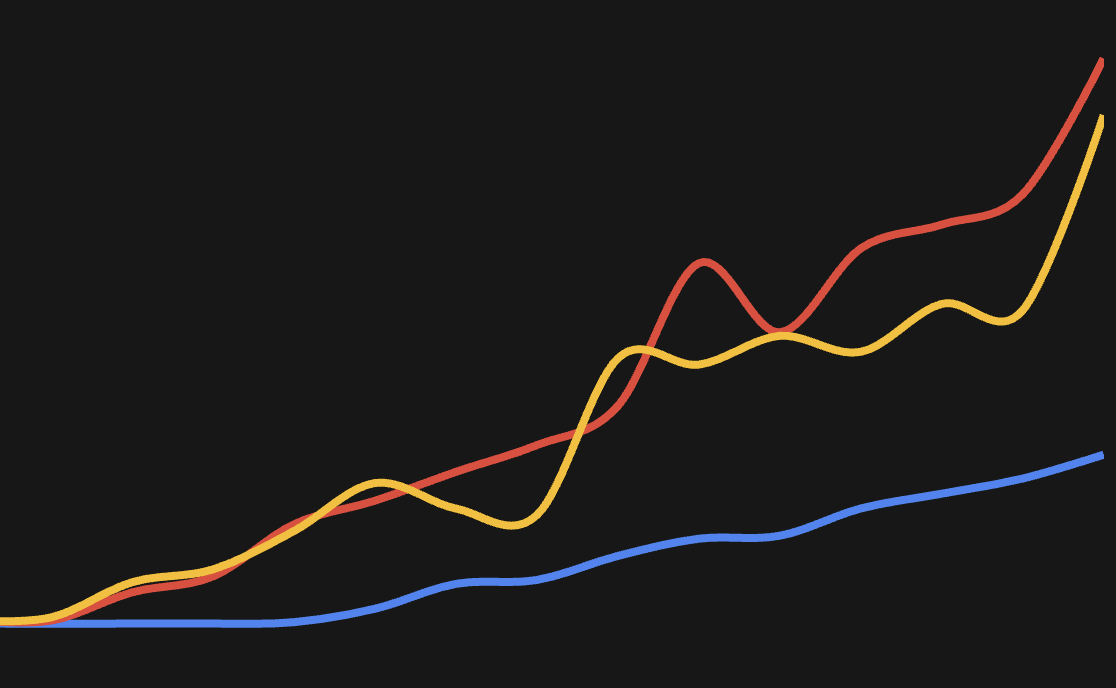
Designed for Scale and Performance
LangDB is the only AI gateway fully built in Rust, guaranteeing performance and scalability unachievable by gateways written in Python or JavaScript.
Integrate in Minutes Framework-Agnostic. No pip or npm Installs.

Granular Cost Control, Management and Optimization
Optimize AI spending effortlessly with our smart routing and cost management features. Set budgets, monitor expenses at model, project, and user levels, and let our system automatically route requests to the most cost-effective models. Compare costs easily and achieve significant savings across your AI operations through intelligent resource allocation.
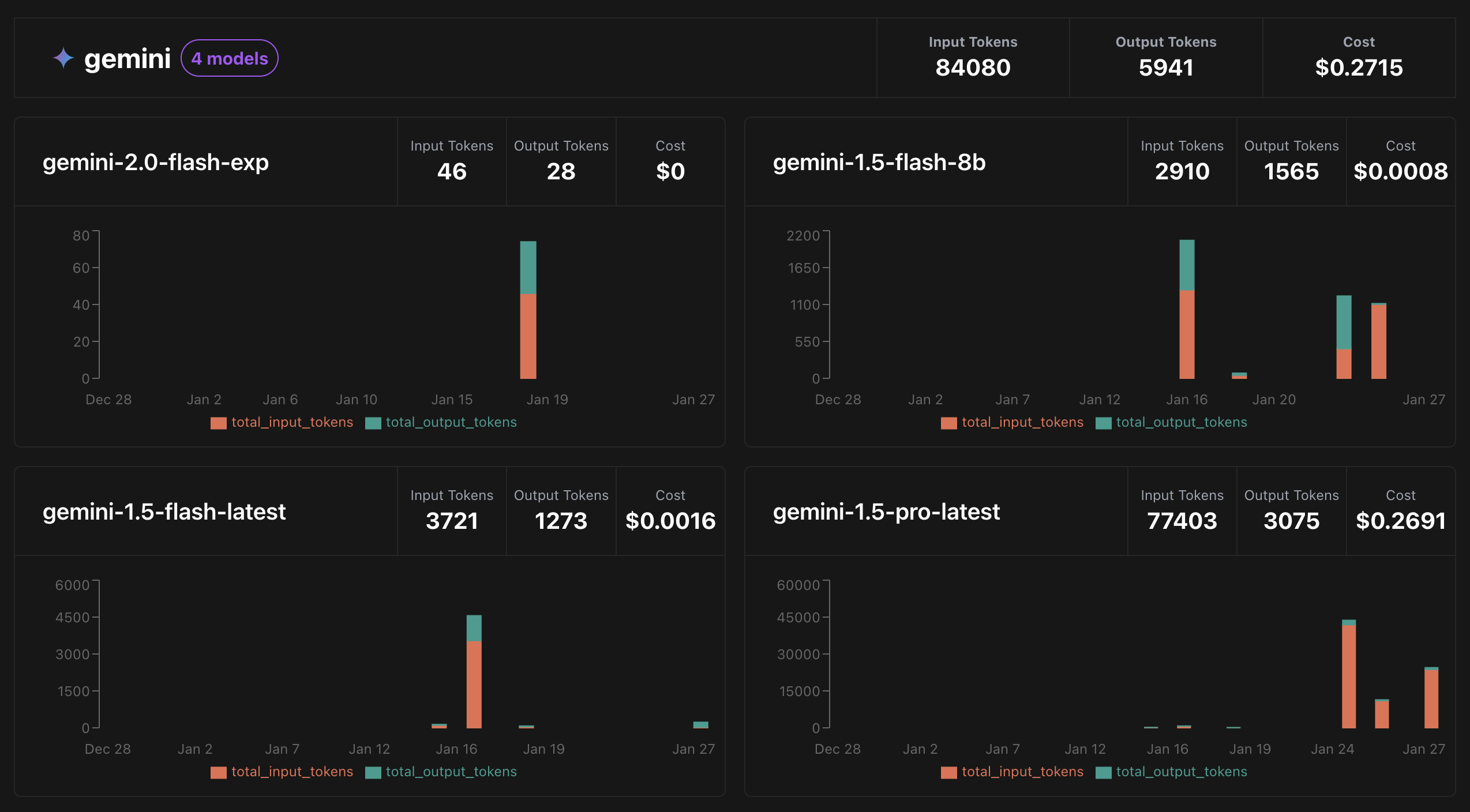
Interactive Playground for Prompt Experimentation
Explore and refine your prompts with our interactive playground. Experiment with different models, compare outputs, and instantly see associated costs. Validate your ideas quickly, optimize prompt performance, and make informed decisions about model selection and usage to maximize efficiency and minimize expenses.
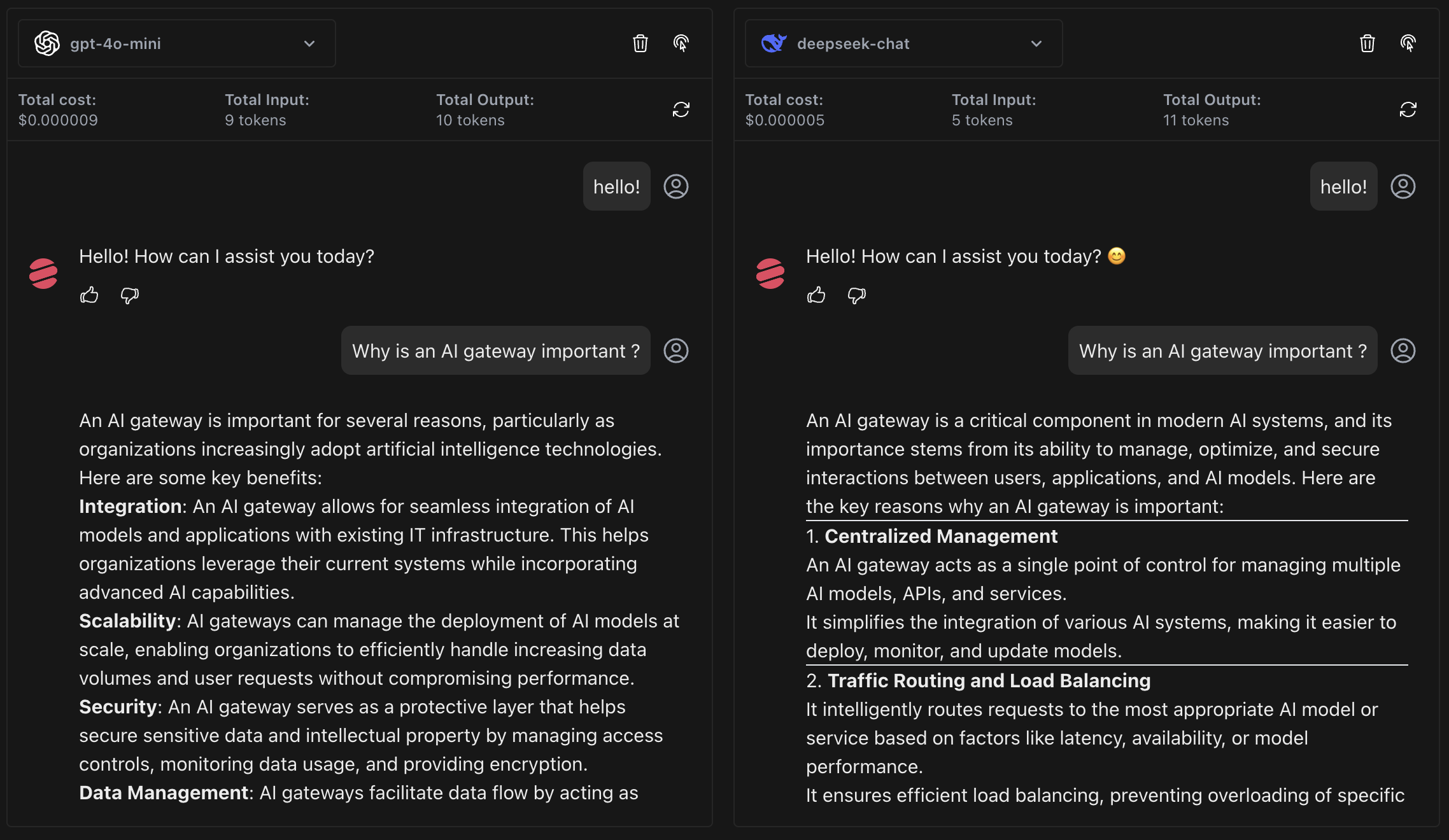
Backed by


